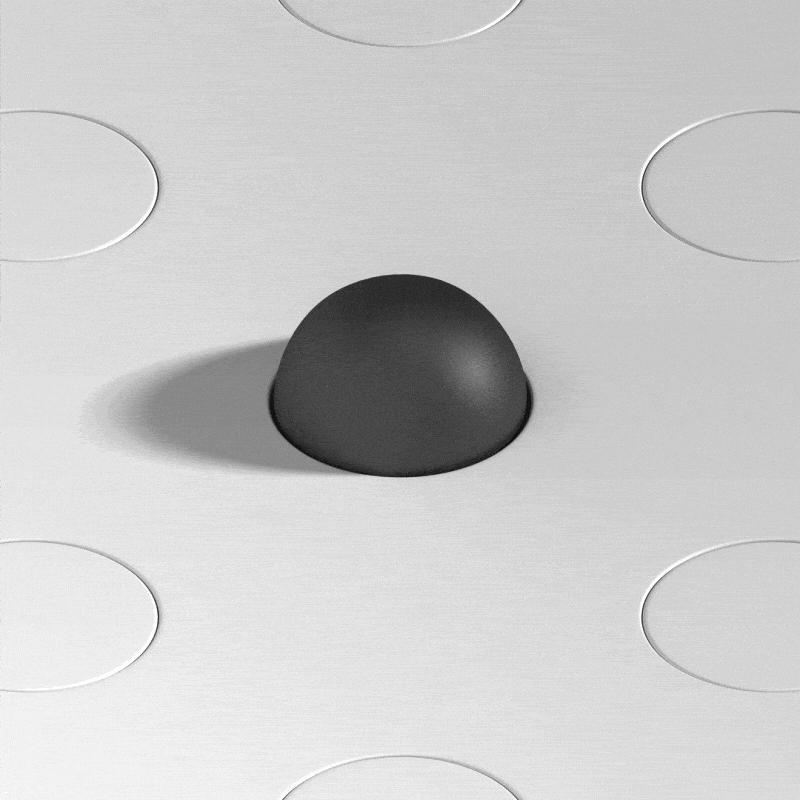9.3 Twelve Interactions
A series of animations created in response to Tom Kitwood's twelve positive interactions of Person-Centred Care (Kitwood 1999). Animations presented were created using a range of techniques, cel animation, motion graphics, 3D animation, and dynamic simulations. Each short animation is a response to the relational approaches, quoted directly from Kitwood.
1. Recognition
Here a man or woman who has dementia is being acknowledged as a person, known by name, affirmed in his or her own uniqueness. Recognition may be achieved in a simple act of greeting, or in a careful listening over a long period - perhaps as a person describes an earlier part of his or her life. Recognition, though, is never purely verbal, and it need not involve words at all. One of the profoundest acts of recognition is simply the direct contact of the eyes.
2. Negotiation
The characteristic feature of this type of interaction is that people who have dementia are being consulted about their preferences, desires and needs, rather than being conformed to others' assumptions. Much negotiation takes place over simple everyday issues, such as wether a person feels ready to get up, or have a meal, or go outdoors. Skilled negotiation takes into account the anxieties and insecurities that often pervade the lives of people with dementia, and the slower rate at which they handle information. Negotiation gives even highly dependent people some degree of control over the care that they receive, and puts power back into their hands.
3. Collaboration
Here we gain a glimpse of two or more people aligned on a shared task, with a definite aim in view. The true meaning of collaboration is 'working together', and this may be literally the case; as for example, in doing the same household chores. Less obviously, it can occur in contexts of personal care such as getting dressed, having a bath or going to the toilet. The hallmark of collaboration in care is that care is not something that is 'done to' a person who is cast into a passive role; it is a process in which their own initiative and abilities are involved.
4. Play
Whereas work is directed towards a goal, play in its purest form has no goal that lies outside the activity itself. It is simply an exercise in spontaneity and self-expression, an experience that has value in itself. Because of the sheer pressures of survival, and the disciplines of work, many adults have only poorly developed abilities in this area. A good care environment is one which allows these abilities to grow.
5. Timalation
This term refers to forms of interaction in which the prime modality is sensuous or sensual, without the intervention of concepts and intellectual understanding; for example through aromatherapy and massage. The word itself is a neoplasm, derived from the Greek word timao (I honour, and hence I do not violate personal or moral boundaries) and stimulation (with its connotations of sensory arousal). The significance of this kind of interaction is that it can provide contact, reassurance and pleasure, while making very few demands. It is thus particularly valuable when cognitive impairment is severe.
6. Celebration
The ambience here is expansive and convivial. It is not simply a matter of special occasions, but of any moment at which life is experienced as intrinsically joyful. Many people who have dementia, despite their suffering, retail the capacity to celebrate; perhaps it is even enhanced as the burdens of responsibility disappear. Celebration is the form of interaction in which the division between caregiver and cared-for comes nearest to vanishing completely; all are taken up into a similar mood. The ordinary boundaries of ego have become diffuse, and selfhood has expanded. In some mystical traditions, this is the meaning of spirituality.
7. Relaxation
Of all the forms of interaction, this is the one that has the lowest level of intensity, and probably also the slowest pace. It is possible, of course, to relax in solitude, but many people with dementia, with their particularly strong social needs, are only able to relax when others are near them, or in actual bodily contact.
8. Validation
This term has a long history in psychotherapeutic works going back some time before Naomi Feil made it famous in dementia care. The literal meaning is to make strong or robust; to validate the experience of another is to accept the reality and power of that experience, and hence its 'subjective truth. The heart of the matter is acknowledging the reality of a person's emotions and feelings, and giving a response on the feeling level. Validation involves a high degree of empathy, attempting to understand a person's entire frame of reference, even if it is chaotic or paranoid, or filled with hallucination. When our experience is validated we feel more alive, more connected, more real; there is every ground for supposing that this is true in dementia as well.
9. Holding
This, of course, is a metaphor, derived from the physical holding of a child who is in distress. To hold, in a psychological sense, means to provide a safe psychological space, a 'container'; here hidden trauma and conflict can be brought out; areas of extreme vulnerability exposed. When the holding is secure a person can know, in experience, that devastating emotions such as abject terror or overwhelming grief will pass, and not cause the psyche to disintegrate. Even violent anger or destructive rage, directed for a while at the person who is doing the holding, will not drive that person away. As in the case of childcare psychological holding in any context may involve physical holding too.
10. Facilitation
At it simplest this means enabling a person to do what otherwise he or she would not be able to do, by providing those parts of the action - and only those - that are missing. Facilitation of this kind merges merges into what have called collaboration. The more truly psychotherapeutic interaction occurs when a person's sense of agency has been seriously depleted, or when action schemata have largely fallen apart. Perhaps all that is left is a hesitant move towards an action, or an elementary gesture. The task of facilitation now is to enable interaction to get started, to amplify it and to help the person gradually to fill it out with meaning. When this is done well there is a great sensitivity to the possible meanings in a person's movements, and interaction proceeds at a speed that is slow enough to allow meaning to develop.
11. Creation
Here a person with dementia spontaneously offers something to the social setting, from his or her stock of ability and social skill. Two common examples are beginning to sing or dance, with an invitation to others to join in.
12. Giving
This is a form of interaction that approximates to the I-Thou mode. The person with dementia expresses concern, affection or gratitude; makes an offer of help, or presents a gift. There is sometimes a great sensitivity to the moods and feelings of caregivers, and a warmth and sincerity that puts the rather frigid culture of ordinary Britain to shame.











